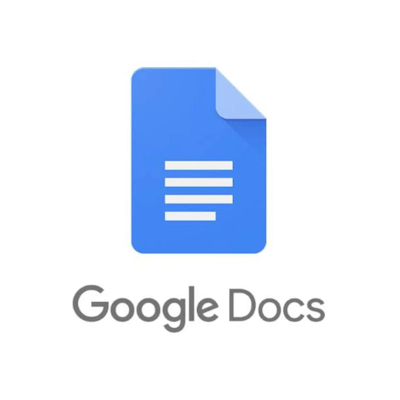19 Best Blogging Tools You Should Use in 2025
Blogs have become an essential part of a business’s content marketing strategy. But they can get tedious and time-consuming.
Whether you’re looking to improve your blog strategy or find efficient ways of churning out more posts, we’ve got the best tools for bloggers like you.

Importance of blogging
There are many reasons why blogging can help your business grow.
Drives traffic
Blogs are great for driving traffic to your site because you provide valuable information that people are searching for. As a bonus, building up your content library increases your internet real estate so that you show up more and rank higher in search engines.
Builds trust and credibility
Writing about topics in your specific industry increases your credibility as an expert. With blog content, you’re able to answer any questions or solve problems that your target customer may have, leading to greater trust.
Social Media Content
One of the great things about articles is that you can share them on social media. Then your followers could easily share that on their network and so on and so on. It’s a great and fast way to expand your reach. In addition, you can repurpose your blog content and adapt them for social media.
Long-term ROI
Blogs are like fine wine. They get better with time. They have great longevity because of the information you’re providing. As time passes, more and more people will search and see your content because of its relevance.
Turns visitors into leads
Implementing blogs is an excellent investment because it can generate leads. You already got their attention, and you got them interested in your content. Use blogs as an opportunity to turn them into leads by including a call-to-action, whether that be to have them subscribe to your newsletter or download a free piece of content.
Blogging trends and tips
So, what’s the hottest thing to do as a blogger? Here are several things to look out for in 2022.
Longer blog posts
That’s right. Although the amount of blog posts is decreasing, the length of a single post is increasing. Portent reports that the average blog post length is 2,520 words. That is up +1,251 compared to last year. Why is that? Bloggers are learning that longer content performs better in terms of rankings and conversions. So, if you’re looking to improve performance, consider writing longer (but high quality) content.
Estimated reading times
Including the reading times on posts have been growing lately. They’re genius because it lets the reader know how much time they should expect to spend on the article. This is a small but effective trend that could set you apart from the rest.
Content experience
Who likes to read long paragraphs for fun? Yeah, neither do a lot of people. That’s why it’s a good idea to break up your text into chunks. It’s less intimidating and speeds up the reading pace. You should also include headers throughout the post, so they know exactly what they’re reading about.
Highly visual content
Blogs are becoming more visual. Adding images and graphics can increase your blog’s performance significantly. Per Orbit Media, 39% of bloggers who included 10+ images in their posts received strong results. So, when it comes to visuals, the more, the merrier.
Want even more traffic? Include videos. They’re great for engaging readers, and it gets them to stay on your website longer.
Best tools for bloggers
Now that you know the hottest trends in blogging, let’s dive into what tools you can use to make your content creation process painless.
Tools for generating ideas

1. Buzzsumo
One of the most popular marketing tools for bloggers to use. Buzzsumo provides in-depth information on trending topics and keywords, including how many times the keyword was mentioned and its engagement rate across the internet.

2. MOZ
Moz is your one-stop shop for all things SEO. In addition to rank tracking and backlinks analysis, they have a keyword explorer tool that provides helpful information on keyword difficulty, volume, and more.

3. Google Trends
Another tool to help with generating ideas is Google Trends. It’s a free resource that allows you to see the most popular searches on Google. You can type in a keyword and see its performance, along with the performance of related topics.

4. Keyword.io
Keyword.io is the perfect tool for researching long-tail keywords. It’s handy given that long-tail search terms are better for SEO than single keywords alone.
Tools for planning your content

5. Trello
Trello is a unique task management tool that utilizes the Kanban method, a visual organizer that increases efficiency through tasks and boards. It’s a very immersive, intuitive, advanced platform with many features to keep you ready and organized.

6. Airtable
Airtable is a great planning tool for every content creator. It has numerous templates already set for you, whether for blogs, social media, film, and more.

7. Asana
If you love checklists, Asana just might be the app for you. Asana organizes tasks in a list form. It’s great for teams and collaborators.
Tools for writing blogs

8. Google Docs
You don’t need a fancy writing app to put together your blog. The free tool Google Docs is a lot more immersive than you think. It has word count, spell check, and it lets you set your headers. What more do you need?

9. Grammarly
Sometimes we all slip up and misuse grammar. This is why it’s helpful to have Grammarly, which can help correct any spelling and grammar mistakes you might have missed. It also suggests rewrites to make your content clear and concise.

10. Yoast SEO
This is mainly for WordPress users. Yoast SEO is a plugin that provides a checklist of what your content needs to meet SEO standards and achieve first-page rankings. The best part is that it automatically tracks the list as you write.

11. SEMRush Writing Assistant
What if you don’t have WordPress? Then SEMRush Writing Assistant is the tool for you. It’s not as informative as YoastSEO, but it breaks your content into four categories: SEO, originality, tone of voice, and plagiarism.
Tools for visual elements

12. Canva
Canva has everything you need for visuals – social media posts, logos, videos, cover photos, or infographics. It’s a user-friendly platform that makes it easy for everyone to make their own designs. Plus, they have an extensive stock image library for you to use. The best part: it’s free!

13. Adobe Spark
Similar to Canva, Adobe Spark allows you to create visuals and designs for anything. Although you’ll have to pay a subscription, it’s another option to consider if you really want to get creative with your artwork.

14. Movavi Video Editor Plus
Videos are great traffic generators, but they also take time to create. Movavi Video Editor Plus cuts your editing process in half. It is an excellent tool for creating cool and stunning visuals quickly and for free!

15. Death to Stock
Need images to decorate your blogs? Death to Stock is the best for finding incredible, high-quality stock photos that honestly don’t even look like stock photos. Instead, they look like something out of a magazine.
Tools for promoting your content

16. Buffer
Buffer makes it easier for you to post on all your social media platforms. It is the cheapest out of all the options, and it has a great analytics feature, so you can carefully track its engagement.

17. Hootsuite
One of the most popular social media management tools out there, Hootsuite has a super user-friendly interface that makes scheduling and promoting your content smooth and fun.

18. Sprout Social
Sprout Social can do everything Hootsuite and Buffer can do. But what makes it stand out from them is its CRM (customer relationships management) feature that makes it easier to communicate and send messages on all your accounts.

19. Later
The best marketing platform for Instagram, Later is more than just a content scheduler. You can research top-performing Instagram hashtags and access LinkinBio, which allows you to add links to your bio and promote your blog posts.
Bonus part: in-house or agencies?
The tools above may be great and all, but if your in-house marketing team is short on time and resources, you should consider turning to freelance professionals. Many marketers are now weighing the pros and cons of in-house or agency blogging.
The benefits of agencies like People First Content are that they can provide a fresh perspective, work on multiple projects at once, and offer expertise if needed. The downside to this is that they cost more money because they need time to get up to speed with your company culture and marketing strategies.
In-house bloggers typically know what content their audience wants before pitching ideas, which saves time for them but may not provide fresh perspectives from someone outside the company’s walls.
Conclusion
Keeping up with a blog can feel intimidating. Fortunately, these above tools are available to help you with every aspect of writing and publishing your blog. Use them to help you churn out more blogs while improving the quality to drive traffic to your website and inspire your readers.
About the Author

Victoria Greywing is a content manager at Movavi. She specializes in writing user-friendly content and researching complex topics of marketing, social media, and blogging to make them easy to understand for other people.






